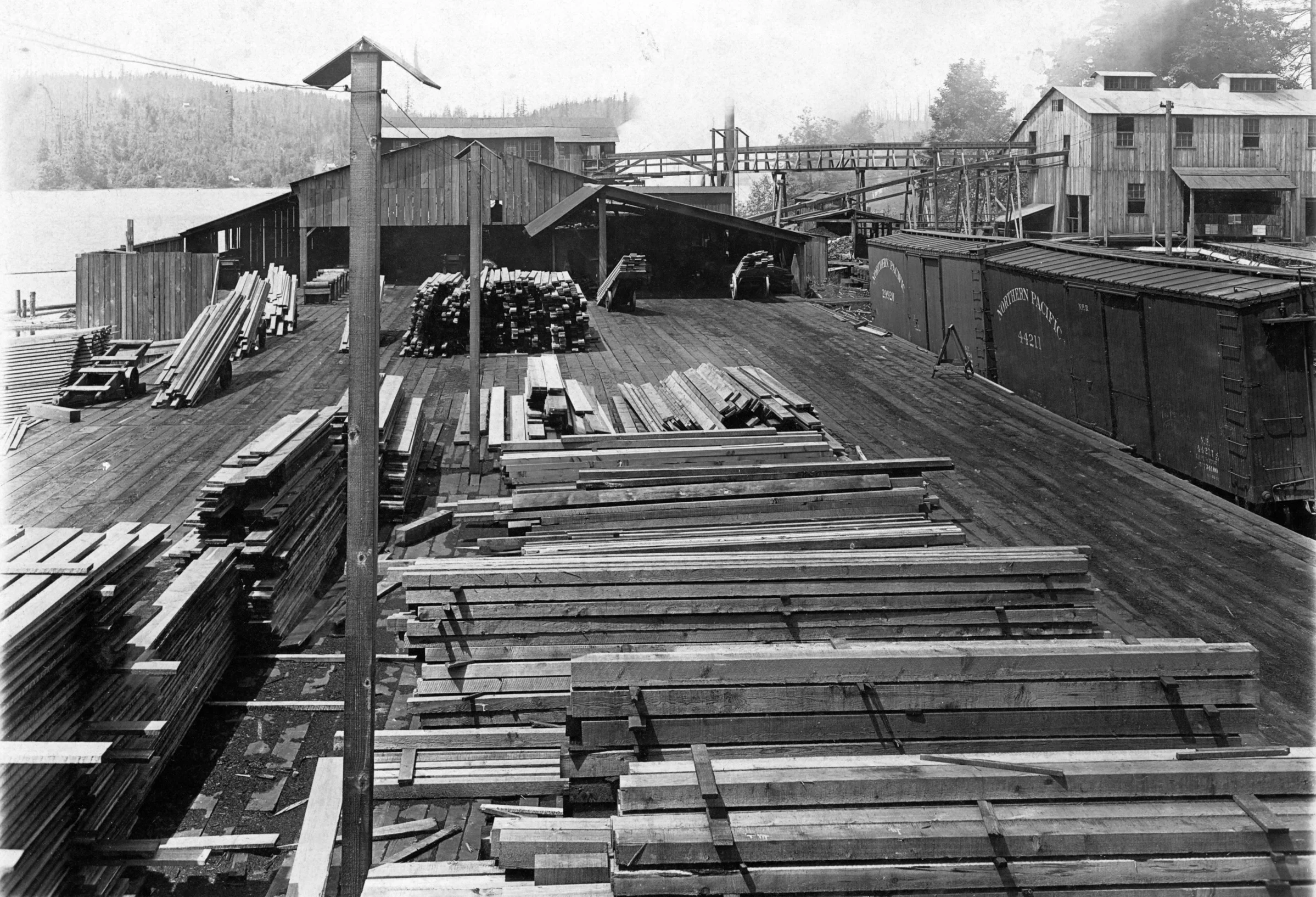The Three Mill Towns of the Big Lake Valley
Trudi Davis
Mill Town Ehrlich
In 1886, land just south of Big Lake was homesteaded by Joseph Theiler, of Switzerland. Household goods for the Theiler family had to be carried on Joseph’s back to their home in Ehrlich.
In 1898 a railroad station was built and the Ehrlich area was known as Theiler’s Spur. In 1900 Frank Ehrlich built a shingle mill and Theiler’s Spur became known as Ehrlich.
A small school house, built in 1902, housed from 10 to 30 children from grades 1 through 8. Ehrlich‘s general store had everything from thread to cattle feed, and included the local post office.
The mill at Ehrlich had several owners that included the Hughes Mill, the Day-Pingry Mill and the Houghten Lumber Company. In later years the timber, at Ehrlich, was logged off by the Nelson and Neal Lumber Company.
In the 1920’s the handwriting was on the wall. The forest was not limitless, the end was in sight. With the passing of the timber, Ehrlich passed right along with it. Where once there were scenes of life and activity – all was quiet and are just memories for a few fortunate enough to still be around.
Mill Town Montborne
Walker Valley and Montborne were the first sections around Big Lake to have settlers, mills, and schools. In 1887, While Hugh Walker was settling in Walker Valley and building a mill, Dr. H.P Montborne built a shingle mill and homesteaded in Montborne. Dr. Montborne was a much better Doctor than a lumberman and the shingle mill soon collapsed and went into receivership. The mill burned and in 1889, Shrewsbury and McLean bought what machinery was left and set up a small mill on the north end of Big Lake. John Nelson constructed a new mill and began operation in July 1903.
Montborne had its own store, hotel, boardinghouse, post office, train depot, W.C.T.U. Hall as well as other buildings.
In 1913, John Nelson died and Frank Neal took over the company. Logs were taken from the Ehrlich area to the Neal Mill by the Day Lumber Company’s old steam boat.
In 1924 the Montborne mill (pictured above) employed 75 men. Frank Neal died that year and company was sold in 1926. During the following years, Montborne was beset with fires and company failures, and in 1930, Mr. B.H Jones turned the mill’s remains into a shingle mill. Later the town’s buildings were torn down or burned and in the 1940’s the school was consolidated with Big Lake School.
Mill Town Big Lake
In 1898, Shrewsbury and McLean bought what machinery was left from the first Montborne mill and set up a new mill at the north end of Big Lake. In 1899, Shrewsbury and McLean sold their mill to Parker Brothers who owned two other shingle mills. They moved their shingle mills to Big Lake. The Big Lake Mill was sold to Joe Day in 1900 and thus began the Day Lumber Company.
In 1902, Wixson and Bronson, of Rhinelander, Wisconsin became the major stockholders of the Day Lumber Company. The company made many improvements to the plant and by 1910 the Day Lumber Company was a growing productive concern. The little town of Big Lake was in its heyday just before World War I. Business was good, and there were steady jobs for men anxious to work.
The town of Big Lake was owned by the Day Lumber Company. The town had a depot, company store, post office, hotel, boarding house, town hall, reading room, church, hospital, as well as many other storage buildings, bunk houses and many company houses for the mill workers families. The Day Lumber Company had it’s own money, called “tin money” that was used to pay workers and to make purchases at the Company Store.
Two fires destroyed a major part of the town of Big Lake. The first fire was in 1923 and the second and most destructive fire was in 1925. As in many other mill towns of that time, the 1923 and 1925 fires changed the course of Big Lake’s history and the course of many of the people’s lives.
